Ahead of me, waves crest and trough in a frothing frenzy, whipped into peaks stiffer than a freshly baked meringue. Stretching across a horizon blurred by heat haze, the ocean of crisp white forms is difficult to comprehend – especially as I’m hundreds of kilometres from the water, at an altitude of 3,500 metres above the sea.
A curious creation of nature, the Campo de Piedra Pómez Nature Reserve in northwest Argentina is a sprawl of pumice stone sculptures, where shapes and patterns constantly shift in a landscape slowly crafted over millions of years. Formed when a pyroclastic cloud spewed by a volcano hit cooler temperatures, solidified and fell to the ground, the space-age scenery is like nothing ever seen before – at least on this planet.
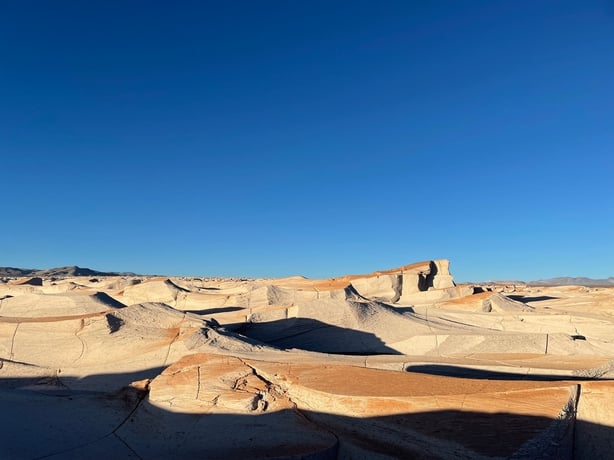
"NASA have been here to do studies," claims my guide, Lautaro, as we climb over rocks so deceptively hollow, they chime like a bell when struck. "It’s the closest conditions to those you’d find on Mars."
Ranging from minus-22 degrees Celsius in winter to plus-35 degrees in summer, with winds of up to 140km per hour, it’s as inhospitable as the red planet. Yet only a few metres away, in the Carachi Pampa basin, dainty-legged flamingos perform a series of balletic poses in a lagoon framed by twisted black lava fields.
The site is a key stop on a tour of the Puna, a high-altitude plateau in the Catamarca Province, characterised by never-ending salt flats, garishly-hued lagoons and ever-shifting sands. Drifting into the more famous Atacama Desert in neighbouring Chile, it shares similar – and arguably even more dramatic – scenery.
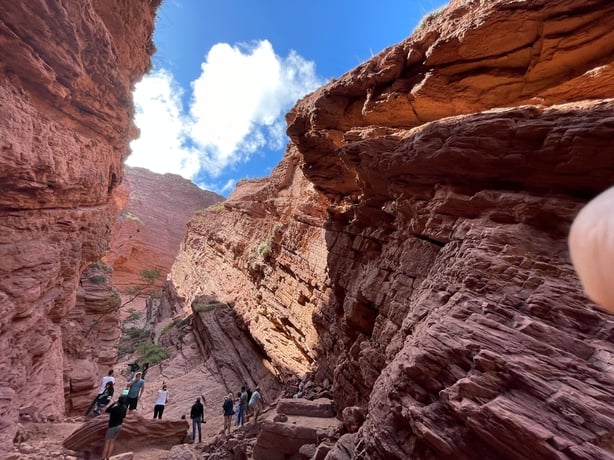
Recent investment in improved roads has made the area easier to access, although it’s still better to travel in a 4×4 vehicle with a knowledgeable guide. Adventure specialists Socompa are one of the few operators to organise road trips through the region. I’d joined them a few days earlier in Salta city, a two-hour flight from Argentina’s capital Buenos Aires.
Driving south through lush, drizzly green valleys, the landscape slowly changed; rocks reddened, the sky brightened, and cordon cacti begin to sprout from crevices in cliffs. At Quebrada de las Conchas, a gorge filled with fossils of seashells and fish, we stopped to explore a natural amphitheatre, where a guitarist strummed echoing melodies and craftsmen sold ocarina mouthpiece flutes.
Our journey continued to Piattelli, a new luxury winery hotel writing a new chapter in Salta’s wine-making story. Around three per cent of Argentina’s wine production comes from Salta, Lautaro had informed me. Dry conditions and strong sun form the intense, full-bodied character of wines, including those based on internationally acclaimed grape variety Torrontes. Watching the sunset from the roof of our new, neatly attired villa, I gazed across the vines watching hummingbirds flit between flowers.
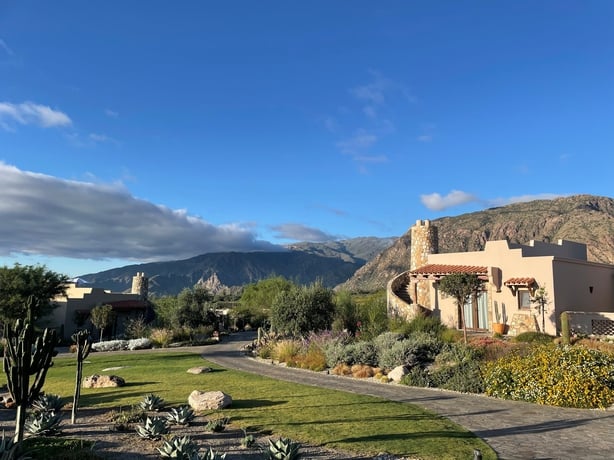
Getting plenty of rest is vital for tackling the giddy high altitudes of the Puna, where elevation averages 4,500 metres. Continuing our long 150km drive the following day, we climbed slowly uphill into the Catamarca Province. What appeared to be streaks of snow in mountain crevices soon materialised as sand, heralding the start of our desert adventure.
Along the roadside, apachetas (a type of cairn) gave thanks to Pachamama (Mother Earth) and red flags paid tribute to Gauchito Gil – a folkloric Robin Hood who stole from the rich and gave to the poor. Towering cordon cacti wore glowing halos in the late afternoon sun and the shadows of vicuñas (a South American camelid prized for its fine wool) stretched across soaring dunes.
Hidden within an oasis of Alamo trees, planted to provide protection from the wind, El Peñón became our wilderness base for several nights. Refurbished and managed by Socompa, the Hosteria de Altura El Peñón is a cosy retreat, with fine food fuelled by solar-powered energy and welcoming smiles. Access to 24-hour electricity has been available for less than a year and salamander stoves are still used for heating in winter.
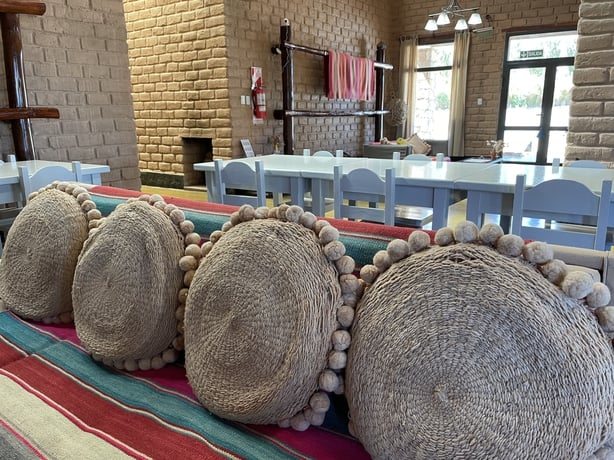
From here, we made our dawn journey to the Campo de Piedra Pómez Nature Reserve. But that’s not the only mind-bending sight in the area.
Covering the base of Cerro Galan, one of the largest exposed calderas in the world, the Laguna Diamante is a toxic lagoon where logically no life should exist. Too large to be appreciated from ground level, it was only properly identified with the help of satellite imagery. We arrive to find flocks of flamingos gliding across its glassy surface, proof even in the harshest of locations, resourceful wildlife will find a way to exist.
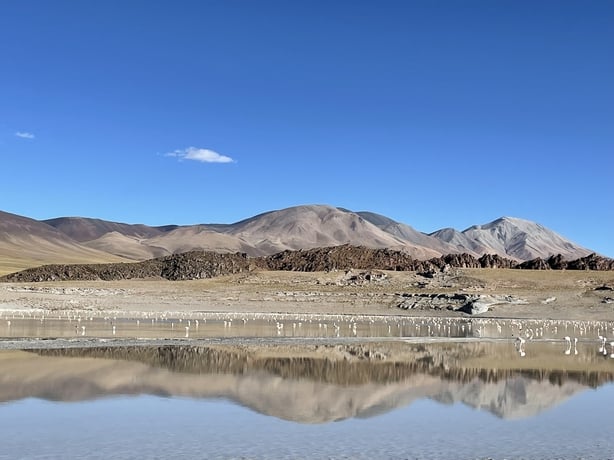
Leaving behind the Puna, we head towards Cachi in Salta Province, the final stop on our journey. Along the way, we stop at the Bodega Colome in the Calchaqui Valley, established in 1831 and founded by the last governor of Salta to be appointed by the King of Spain, and thought to be the oldest continually active winery in Argentina. Now run by a Swiss family, it’s also home to a gallery of works by visionary artists James Turrell, know for his work with light and space. In many ways, his abstract installations are a flashback to shapes and colours decorating the Puna.
I’m brought back down to Earth with the homely scents and flavours of Finca Santana, a small guest house run by Adriana, a photographer and textile designer who shunned the fast pace of city living in Buenos Aires for a gentler, slower existence. Fresh walnuts dry on the patio along with verbena leaves used for tea. Inside the adobe brick house, blankets and tapestries woven by local expert weavers drape furnishings below a ceiling of antique, pockmarked cordon cacti wood which Adriana collected more than 20 years ago.
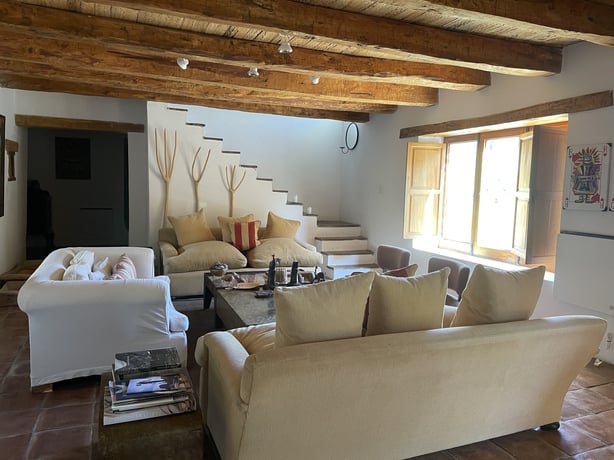
Although far removed from the fierce environs of the Puna, it’s a fitting end point for a journey immersed in nature, where life thrives in unexpected places and waves – of sorts – deliver you to surprising shores.
How to plan your trip
Jacada Travel (jacadatravel.com; 020 3514 0977) offers a range of trips through Argentina, including a 10-night private off road expedition through the Puna Desert with Socompa, staying at Finca Valentina and Hosteria El Peñon from £5,639 or roughly €6,500 pp on an all-inclusive basis. Flights extra.
